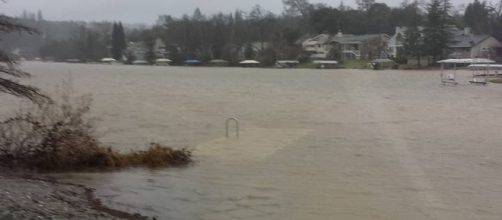The latest e-mail notification from Lake Wildwood Administration: As of today, there are fourteen cases that are epidemiologically linked to the recent E. coli Outbreak, with the commonality among them being the use of Lake Wildwood’s Commodore Beach often with unintentional ingestion of lake water.
Epidemiologically means that a case may be considered linked to a laboratory-confirmed case if at least one case in the chain of transmission is laboratory confirmed. We have 11, 2 more than a source told me the other day.
Lab confirmations
Eleven of these cases are lab confirmed, and we await additional lab results.
Of the fourteen cases, (one up from yesterday) eleven are children and three are adults. Four of the children have developed Hemolytic Uremic Syndrome.
The highest levels (of fecal coliform) being measured were near Meadow Park at greater than 2,419.2 MPN per 100 mL. Levels above 200 MPN per 100 mL warrant beach closure, according to my information.
The CDC, county, and the Lake Wildwood Homeowners Association have no idea where the contamination is coming from, except the epidemiologically of Commodore beach and the children. While the LWW Association hasn't specifically said where the tests were taken at the beaches, I can't help but wonder if it was winter flooding after 5 years of drought that brought E.
coli into the tributary that runs into the lake at Meadow Park, and the tributary that created the stagnant pond at Commodore beach.
However, speculation is clearly just that.
I am not a microbiologist, but I became fascinated with E. coli when we vacationed in Maui a few weeks ago. One of the second beaches we visited, one certain to contain turtles, was closed due to high fecal counts and E. coli. First off, everything we knew about E. coli pertained to food at Chipotle Grill. Yet, people were swimming and enjoying themselves as if they hadn't a care in the world. I wondered if we should ignore the warning and swim, but caution took over after a conversation with a resident who just happened to be sitting on the other side of the yellow caution tape.
He told us not to go into the water, that they had had a tropical storm and when it rains hard, feces from animals rolls downhill and into the water. Animal feces contains E. coli and in many cases E. coli 0157:H7 which I knew nothing about at the time. We left, and at the beaches that were clear of contamination, they didn't have tributary streams so I wondered if the old man was right. Then promptly forgot about it.
On our 2nd to the last day in Maui, I received an email from the Lake Wildwood Association, declaring Commodore beach's closure due to high fecal coliform, which was the same warning the Maui beach had when we had visited 7 days earlier except they had added the words: E. coli.
The first day home, we discovered 9 people had become ill at Commodore Park with 4 in the hospital. 2 weeks later and there were 13 sick, but most of them had been released from the hospital with the exception of one little boy, according to reports, who had his kidneys shut down. Today we are told: Of the fourteen cases, eleven are children and three are adults.
I was informed that Lake Wildwood contracts out for its fecal coliform testing and as I said, at first, I was under the impression they tested the beaches. I soon discovered from the e-mails I received, that fecal content wasn't tested at the beach which the old man in Hawaii said was crucial. According to researchers, fecal coliform and/or E.
coli can become embedded in the biofilms that surround the sand, in addition to the sand giving the bacteria shade from the sun so it can grow. E. coli loves heat, water, grows fast and dies slowly. When you have high fecal coliform you can also have giardiasis or cryptosporidiosis and with levels 12 times higher than normal at one park, it is a valid concern.
Report issued warning
In a report commissioned by LWW in 2005, one recommendation was to check the beach areas during the summer months for high fecal content. Yet, we hadn't done so. Instead, whoever did the testing focused on the water 20 feet from shore, not 5, as an anonymous source told me. This is one change we can institute with ease, along with picking up pet waste and even, if you have a herd of deer, their's as well, but I will have to think on that solution for a bit.
Even though E. coli dies off slowly, it does die, which means that our lake will return to normal if not in the near future, then certainly when the temperature drops. I have the greatest confidence in the county along with UC Davis and the CDC to discover the source of the children's contamination. In the meantime, we keep them in our thoughts and prayers.


